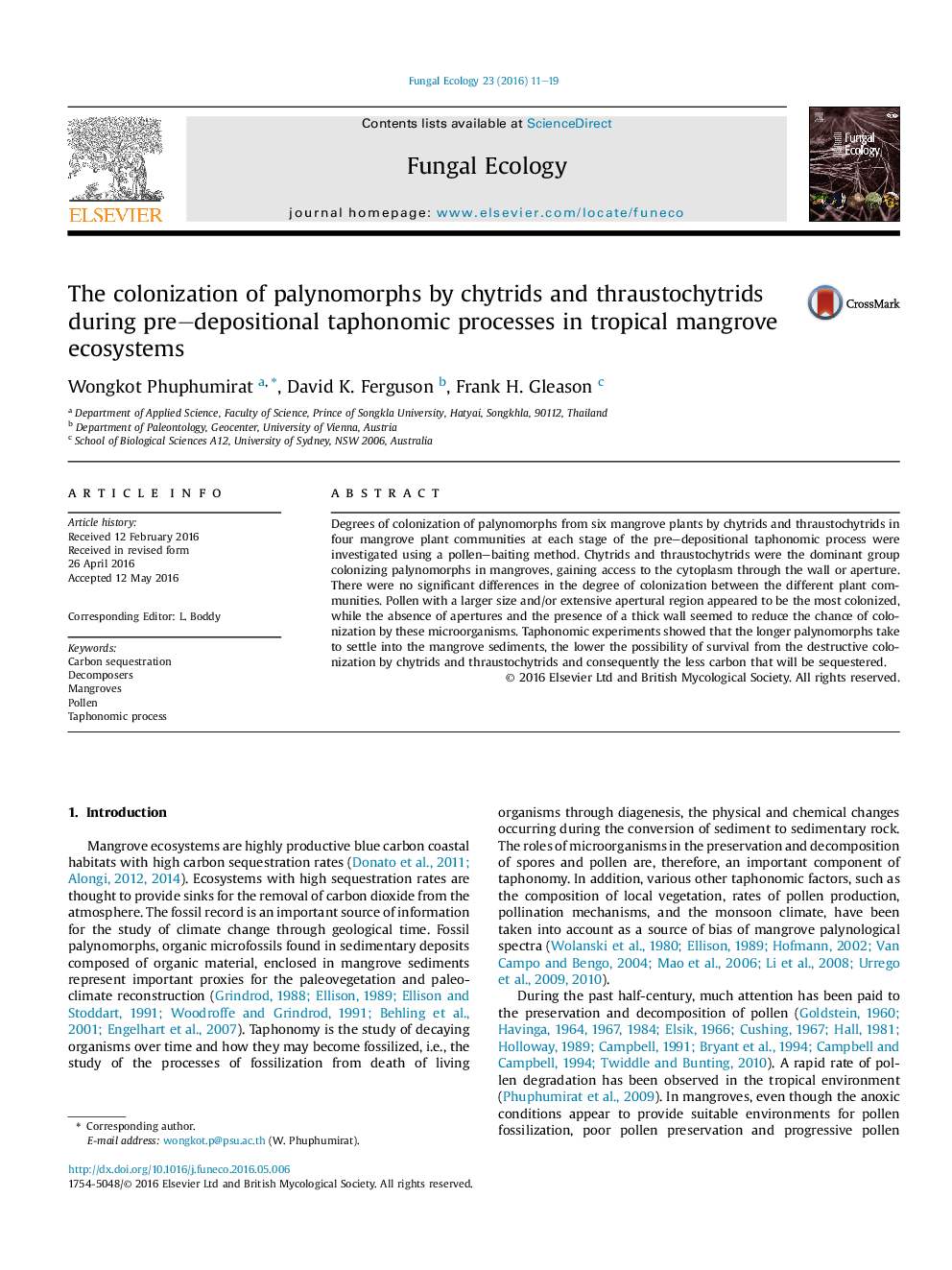| Article ID | Journal | Published Year | Pages | File Type |
|---|---|---|---|---|
| 8384297 | Fungal Ecology | 2016 | 9 Pages |
Abstract
Degrees of colonization of palynomorphs from six mangrove plants by chytrids and thraustochytrids in four mangrove plant communities at each stage of the pre-depositional taphonomic process were investigated using a pollen-baiting method. Chytrids and thraustochytrids were the dominant group colonizing palynomorphs in mangroves, gaining access to the cytoplasm through the wall or aperture. There were no significant differences in the degree of colonization between the different plant communities. Pollen with a larger size and/or extensive apertural region appeared to be the most colonized, while the absence of apertures and the presence of a thick wall seemed to reduce the chance of colonization by these microorganisms. Taphonomic experiments showed that the longer palynomorphs take to settle into the mangrove sediments, the lower the possibility of survival from the destructive colonization by chytrids and thraustochytrids and consequently the less carbon that will be sequestered.
Related Topics
Life Sciences
Agricultural and Biological Sciences
Ecology, Evolution, Behavior and Systematics
Authors
Wongkot Phuphumirat, David K. Ferguson, Frank H. Gleason,
